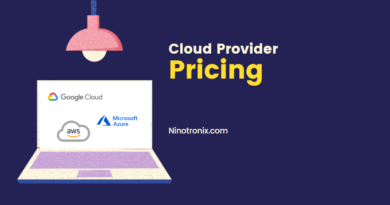AWS CodeCommit : Updates, Tips, and Best Practices for AWS CodeCommit
AWS CodeCommit is a fully-managed source control service that enables developers to securely store and manage their source code repositories in the cloud. It provides a secure, scalable, and highly available environment to manage your code repositories, and also integrates with other AWS services like AWS CodePipeline, AWS CodeBuild, and AWS CodeDeploy.
Here are some updates, tips, and best practices for AWS CodeCommit:
Updates:
- Branch-level permissions: AWS CodeCommit now allows you to set branch-level permissions for your repositories, which enables you to control access to specific branches within a repository.
- Cross-account access: You can now grant cross-account access to your AWS CodeCommit repositories, which makes it easier to collaborate with other teams or organizations.
- Improved search: AWS CodeCommit has improved its search functionality, which makes it easier to find specific files, commits, or branches in your repository.
Tips:
- Use AWS CodeCommit with AWS CodePipeline: AWS CodeCommit integrates seamlessly with AWS CodePipeline, which enables you to create continuous integration and continuous delivery (CI/CD) pipelines for your applications.
- Use HTTPS or SSH: AWS CodeCommit supports both HTTPS and SSH authentication methods for accessing your repositories. HTTPS is recommended for simple use cases, while SSH is more secure and offers more granular control.
- Use Git Credentials Helper: To simplify the authentication process, AWS CodeCommit provides a Git Credentials Helper that automatically retrieves and caches your AWS credentials.
Best Practices:
- Organize your repositories: Organize your repositories based on your application architecture, team structure, or project type. This makes it easier to manage access permissions and track changes.
- Use branching strategies: Use a branching strategy that suits your development workflow, such as GitFlow, trunk-based development, or feature branching. This helps you maintain a clean and consistent codebase.
- Use code reviews: Implement code reviews as a best practice to ensure the quality of your code. AWS CodeCommit provides a code review feature that enables developers to review each other’s code before merging it into the main branch.
- Implement security best practices: Follow AWS security best practices to secure your AWS CodeCommit repositories, such as using IAM policies, enabling MFA, and encrypting data in transit and at rest.
- Backup your repositories: Backup your AWS CodeCommit repositories to ensure you have a copy of your code in case of data loss or disaster. You can use AWS Backup to create and manage backups of your repositories.
In summary, AWS CodeCommit provides a secure, scalable, and highly available environment to manage your code repositories in the cloud. By following these updates, tips, and best practices, you can optimize your use of AWS CodeCommit and improve your development workflow.




